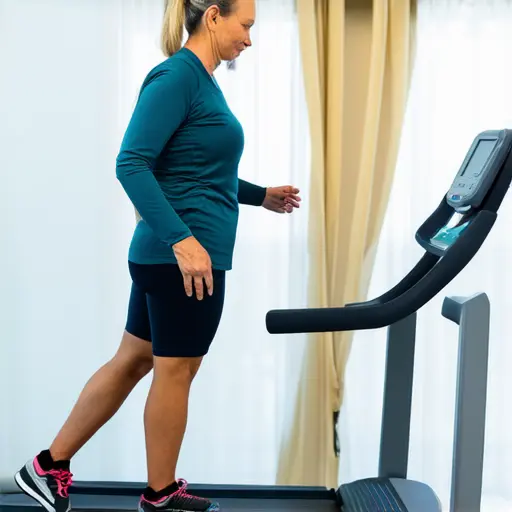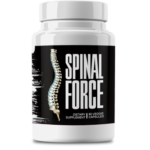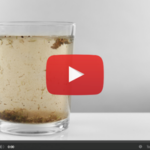This Village-Made Chinese Pain Reliever Eliminates Back And Joint Pain!
The Surprising Benefits of Physical Therapy for Osteoarthritis

Physical Therapy for Osteoarthritis: A Natural Way to Ease Joint Pain and Stay Active
If you're living with osteoarthritis, you don't need me to tell you how frustrating joint pain and stiffness can be. While medications and surgeries often grab the spotlight, there's an underrated hero in OA treatment: physical therapy. This drug-free approach isn't just about temporary relief—it can actually help you move better, hurt less, and potentially slow down the condition's progression. Let's dive into how PT works and why it might be the game-changer your joints have been waiting for.
Osteoarthritis 101: Why Movement Matters More Than You Think
The Wear-and-Tear Reality of OA
Osteoarthritis isn't just "getting older"—it's what happens when the cartilage protecting your bones gradually wears down. Picture the shock absorbers in your car wearing out, and you'll get the idea. The result? Those all-too-familiar aches in your knees, hips, hands, or spine that make even simple movements a challenge.
Here's the good news: While OA is degenerative, it's not a life sentence to the couch. Research shows that the right kind of movement—the cornerstone of physical therapy for osteoarthritis—can actually help joints function better and keep you doing the things you love.
Busting the "Rest Is Best" Myth
When joints hurt, our first instinct is often to baby them. But here's the paradox: gentle, guided movement is exactly what stiff joints need. A good physical therapy program helps by:
- Loosening up stiff joints through carefully chosen exercises
- Building muscle "bodyguards" to support vulnerable joints
- Getting you moving more smoothly and with less pain
- Teaching smart ways to protect joints during everyday tasks
Unlike pain meds that just put a band-aid on symptoms, PT gets to the root of the problem—making it a sustainable solution that actually improves your joint health over time.
The Science Behind Physical Therapy's Magic
How Movement Heals
Physical therapy works with your body's natural healing processes. When you move, you're not just exercising—you're sending nutrient-rich blood to your joints and building up the muscles that take pressure off damaged cartilage. It's like giving your joints a tune-up from the inside out.
The numbers speak for themselves. People with knee OA who stick with PT often see:
- About 30% less pain (that's the difference between wincing and walking comfortably)
- Easier time walking and keeping up with daily activities
- More time before even considering surgery
Your PT Toolkit: What to Expect
Your physical therapist might use a mix of these approaches:
- Hands-on help: Gentle techniques to improve how your joints move
- Smart exercises: Targeted moves that strengthen without straining
- Pain relievers: Heat, ice, or safe electrical stimulation when needed
- Walking school: Learning to move in ways that spare your joints
Why Physical Therapy Wins for OA
Pain Relief Without the Pill Bottle
While pain meds come with side effects and risks, PT offers natural relief. Techniques like water exercises or gentle yoga-inspired moves reduce joint stress while triggering your body's own pain-fighting chemicals.
Getting Your Groove Back
Remember when standing up from the couch wasn't a production? A 2020 study showed that after just 8 weeks of PT, OA patients moved 40% faster on stairs and had an easier time with daily tasks like getting dressed—small wins that add up to big quality-of-life improvements.
Building Your Body's Natural Support System
Weak muscles make joints work overtime. PT focuses on strengthening exactly the right areas—like your thighs for knee OA or core for back OA—creating what I like to call "nature's knee brace" or "built-in back support."
Your Personal OA Action Plan
First Visit: The Roadmap Session
Your initial PT appointment will cover:
- Where and how much it hurts (no sugarcoating allowed)
- What daily activities are toughest for you
- Your personal goals—whether that's playing with grandkids or just tying your shoes without drama
Exercises Made Just for You
PT isn't cookie-cutter. For example:
- Knee OA: Think gentle leg lifts, mini-squats (emphasis on mini), and bike pedaling
- Hip OA: Side-lying clamshells, bridges, and pool walking
- Hand OA: Playdough-like putty exercises and finger stretches
PT Plays Well With Others
The Meds-and-Movement Combo
While PT can reduce your need for pain meds, it works great alongside:
- NSAIDs for bad flare-ups
- Occasional cortisone shots when really needed
- Those gel injections some knee OA patients swear by
The Weight-Joint Connection
Every extra pound puts pressure on joints. Many PT programs include nutrition tips because dropping just 10 pounds can cut knee pain in half. Eating more anti-inflammatory foods (hello, salmon and walnuts) can give your PT results an extra boost too.
The PT Journey: What Really Happens
First Steps With Your Therapist
At your first visit, expect your PT to:
- Review your medical history like a detective
- Check how your joints move (or don't move)
- Help set realistic goals—no empty promises here
Growing Stronger, Step by Step
As you progress, your therapist will:
- Gradually up the challenge (but never to the pain zone)
- Mix in new exercises to keep things fresh
- Adjust anything that doesn't feel right for your body
Real People, Real Results
Margaret's Story: From Couch to Canine Walks
At 68, Margaret's knee OA had her nearly housebound. After 12 weeks of PT focused on smart strengthening and walking retraining, she:
- Went from constant pain to only occasional discomfort
- Got back to daily walks with her terrier, Max
- Put off knee replacement surgery for years (and counting!)
PT as Preventive Medicine
Regular PT doesn't just manage OA—it can actually change its course by:
- Improving joint alignment to prevent uneven wear
- Fighting age-related muscle loss that worsens OA
- Teaching joint-smart ways to do everyday tasks
Wrapping It Up
The PT Advantage for OA
To sum it up, physical therapy for osteoarthritis delivers:
- Natural pain control without relying on meds
- More freedom in your daily movements
- Stronger support for vulnerable joints
- A plan tailored just for you
- Better results when combined with other treatments
Your Next Move (Literally)
If OA's been calling the shots in your life, physical therapy might help you take back control. A consultation with a good PT could be your first step toward moving easier and living better. After all, the right kind of movement isn't just possible with arthritis—it's often the best medicine you've got.
Has PT helped you or someone you love manage OA? We'd love to hear your story—drop us a comment below!








